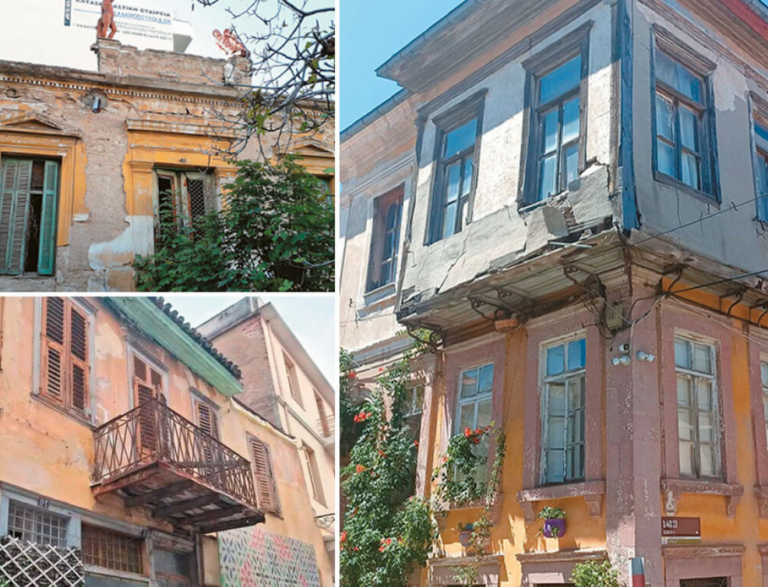The news came from the opposite shore of the Aegean, from Ayvalik: the ancestral home of Elias Venezis, a prominent Greek writer of the past century, is on the verge of collapse. Unfortunately, this is not an uncommon occurrence. Many homes where notable Greeks of the past, especially figures of literature and the arts, lived part of their lives, have been left at the mercy of relentless time, for various reasons. Some of these homes no longer exist.
Yet, the homes of great scientists, intellectuals, and artists are not mere lifeless structures. They emit a peculiar energy. They carry through time the experiences, emotions, images, and inspirations of their former residents. They reflect the atmosphere and environment of the era in which their occupants lived and created the works we now admire. These homes are part of our cultural heritage. The surviving ones evoke emotion, and often awe, in visitors and even passersby.
A piece of History
The childhood home of Elias Venezis undeniably falls into this category. There are many reasons for this, but the most significant is that it forms a part of the history of the long-suffering Hellenism of Asia Minor. Ayvalik, also known as Kydonies — the Turkish word “ayva” means quince — was one of the most important historical centers of the Greek presence in the region, second only to Smyrna.
The house is located above the church of the Holy Trinity, now in ruins. It stands in an area where over 30,000 Greeks once lived, a place where Hellenism flourished for centuries but also suffered greatly.
Venezis lived his childhood and teenage years in this house. He was born on March 4, 1904, to a well-to-do family, one of six children — he had five sisters. His father, Michail Mellos, was a wealthy landowner of Kefalonian descent, and his mother, Vasiliki, was from Lesvos. “Venezis” was a literary pseudonym, derived from his maternal grandfather, Dimitris. With the outbreak of World War I, the family faced persecution from the Turks and moved to Mytilene. This was their first forced displacement.

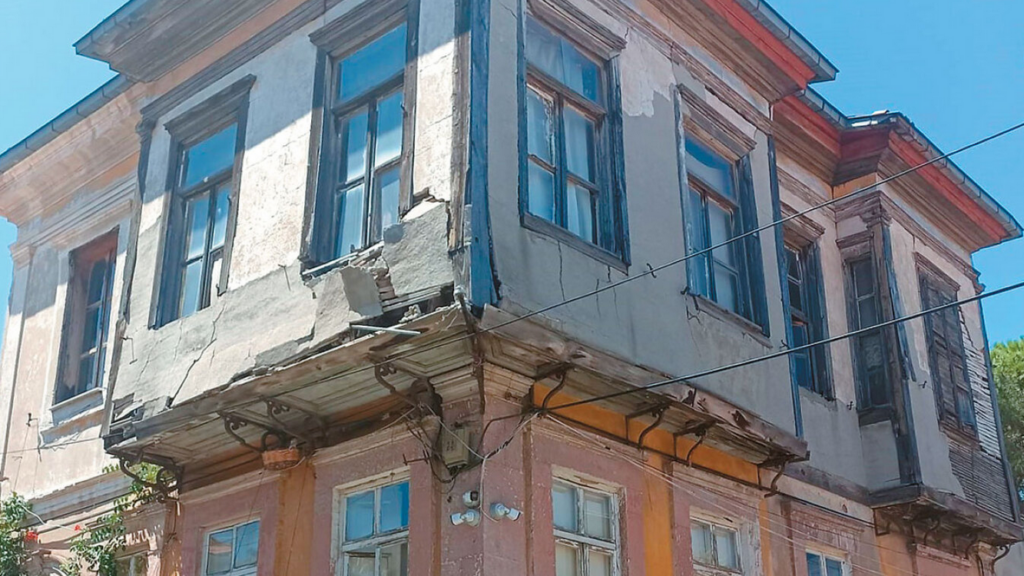

The family returned to Ayvalik in 1919, and Elias Venezis completed his secondary education at the historic Kydonies Academy, one of the most important educational institutions of the time. He planned to study engineering in France and was diligently studying advanced mathematics. However, in August 1922, the new wave of war, which eventually turned into a national tragedy, overtook him: the Asia Minor Catastrophe.
The family left their home in Ayvalik for good. But amidst the chaotic and desperate attempts to escape during massacres and other atrocities committed by the Turks, Elias did not manage to board the ship that would have saved him.
He was captured but managed to survive the horrific conditions of captivity. He was eventually released 14 months later, as part of the population exchange agreement.

A witness to tragedy
The family home of Elias Venezis remained a silent and undeniable witness to the dramatic events of the uprooting of Hellenism from Asia Minor. The victims of the Turks in Ayvalik numbered in the thousands. Venezis never saw the house again for the rest of his life. Yet, it had left a lasting mark on him, and he constantly longed for it, every day. From his next stop in Lesvos, he would often travel to the northern part of the island, to Eftalou, and gaze at the mountains of the Pergamon region, among which Ayvalik lies. Almost always with tears in his eyes…
This two-story house eventually came under the ownership of unknown individuals, Turks, of course. The reason they abandoned it to its fate is also unknown. Built in the mid-19th century, with a wooden frame atop a stone ground floor, it has been struck by numerous powerful earthquakes. Its upper floor is collapsing, eroded by time, and the plaster is falling off; it’s only a matter of time before the walls give way as well.
Venezis never wanted to return, not even as a visitor. He couldn’t reconcile with the idea of the Greeks being expelled and their properties confiscated. Perhaps he didn’t want to relive the nightmare of captivity and defeat. The house was later identified in 1970 with great difficulty by his sister Agapi and her son, Petros Molyviatis, the distinguished diplomat and future Minister of Foreign Affairs. They photographed it, and the image was later published in the literary magazines “Aiolian Letters” and “Nea Estia.”
The key point, however, is that even now, although it seems quite challenging, given that the house is located in a foreign country—specifically Turkey—initiatives can still be undertaken from both sides to eventually preserve this important piece of the historical and cultural heritage of Asia Minor Hellenism.
The book of his life
Elias Venezis is one of Greece’s most widely read authors. Many of his works are continuously reprinted. However, very few people know details about who he was and his life story. Beyond his inherent literary talents and rich sensitivities, it was his life experiences that were transformed by his skilled pen into literary masterpieces. These experiences led to countless awards and honors, and twice, in 1960 and 1963, nominations for the Nobel Prize in Literature. The first time, the prize went to the French writer Saint-John Perse. The second time, another great Greek, George Seferis, won the honor.
He made his first steps in literature in 1921, while still a student, by publishing short stories in the Greek magazine of Constantinople, “O Logos.”
His significant literary career began after he resettled in Mytilene in 1923. A vibrant literary scene had developed there, led by Stratis Myrivilis. Myrivilis encouraged the young Venezis to write down his experiences from his captivity in the Kemalist Labor Battalions in the Turkish interior. This was an unimaginable ordeal of forced labor in mines and roads under inhumane living conditions, with constant deprivations and tortures for 3,000 people from Ayvalik. Only 23 survived.
These harrowing experiences were recorded in his first novel, The Number 31328, one of the greatest anti-war books. A testament to its success is that its first edition was in 1931, and the latest in 2011!
In 1932, he moved to Athens, and in 1938 he married Stavritsa Molyviati, also from Ayvalik. They had one daughter, Anna. He was already working at the Bank of Greece. In 1939, he published the monumental novel Galini (Serenity), which later became a TV series on the Hellenic Broadcasting Corporation (ERT) in 1976, after his death.
It is considered the first book to address the issue of refugee settlement in Greece with literary depth. It narrates the difficulties of two different worlds coexisting and their inevitable conflicts. For Galini, he was honored in 1940 with a commendation from the Academy of Athens, as well as the first State Prize for Literature, which he shared with Stratis Myrivilis.
How he escaped execution
On October 28, 1943, employees of the Bank of Greece gathered in the large hall of the building to honor the anniversary of “Ochi Day” and the memory of their colleagues who fell in battle. Venezis was to speak to them. The Germans stormed the hall, arrested the governor, some employees, and Venezis. He was isolated in “Block C” of Averoff Prison and was to be executed. The unified outcry of the intellectual community, led by the future Archbishop Damaskinos, prevented the tragedy.
From this painful experience, his only play, Block C, emerged. After the liberation, it was staged by the National Theatre, directed by Pelos Katselis, with actors Thanos Kotsopoulos and Iordanis Marinos.
At the end of 1943, he also released his novel Aeolian Earth, his most popular and widely translated work. Heart-wrenching, written from the perspective of a child named Petros, who resembles the author himself, it is a hymn to the lost paradise of his childhood, to love for the lost homeland, to the unbreakable family bonds, and overall, another chronicle of the Greeks of Asia Minor before the catastrophe and their expulsion.
Venezis published collections of short stories, novels, travel impressions, and historical works. In 1957, he was elected an academic in the chair of Literature. From 1958, he wrote for the newspaper Akropolis, alternating with Stratis Myrivilis, Angelos Terzakis, and M. Karagatsis, contributing to The Novel of the Four, which was also turned into a TV series in 1981 by YENED. He had a radio show and held high-ranking positions at the National Theatre, the Greek National Opera, and the Thessaloniki Film Festival.
“Unexplored”
The most striking fact is that 51 years after his death, Elias Venezis remains somewhat “unexplored.” His correspondence has yet to be systematically studied, while his complete works were only recently published. His countless articles, columns, and speeches have been minimally recorded.
“After the Metapolitefsi, researchers were interested in ideologies. My father was not fashionable; no one could easily appropriate him ideologically. For the left, he was right-wing, and for the right, left-wing. He was neither; he was against war,” explained his daughter Anna Venezis-Kosmetatou in a 2014 event in his memory.
Nevertheless, she donated her father’s archive to the Gennadius Library. His correspondence, speeches to the Academy, editions, and translations are all fully cataloged and waiting for researchers to discover them. Venezis is uncharted territory for them.
Elias Venezis passed away in 1973, succumbing to laryngeal cancer. According to his wishes, he was buried in an anonymous grave at the Molyvos cemetery in northern Lesvos, across from the Turkish coast. Only one word is inscribed on the tombstone: “GALINI” (Serenity).
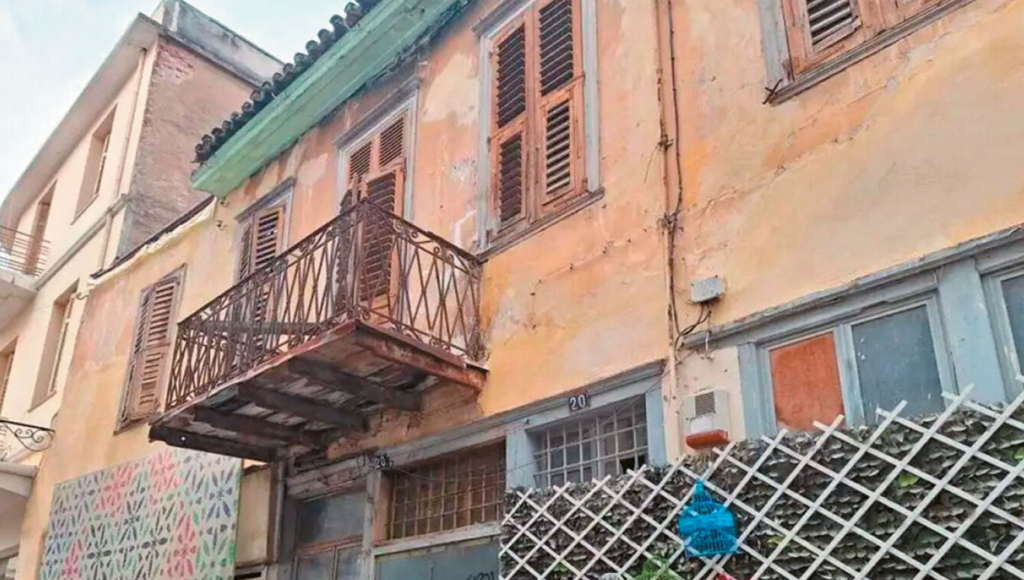
The parental home of poet Tasos Livaditis is also in danger. Last year, two organizations of the Greek diaspora took action, launching a campaign to save it. The “Hephaestus Wien – Österreichisch/Griechischer Integrationsverein” based in Vienna and the Hellenic Cultural Organization “Nostos” of Argentina, based in Buenos Aires, appealed to the relevant authorities to take immediate measures “so that another monument, a sample of last-century architecture and a place of memory for a great poet and his work, in the heart of Athens, does not disappear.”
The goal is for the building to be transformed into the “Tasos Livaditis Museum,” where books, manuscripts, personal items, photos, records of his poems set to music by prominent Greek composers, and other material related to his life and work could be housed.
This followed efforts in 2007, after which the Ministry of Culture designated the buildings at Leonidou Street, numbers 70 & 74, along with the wall at number 72, as protected monuments.
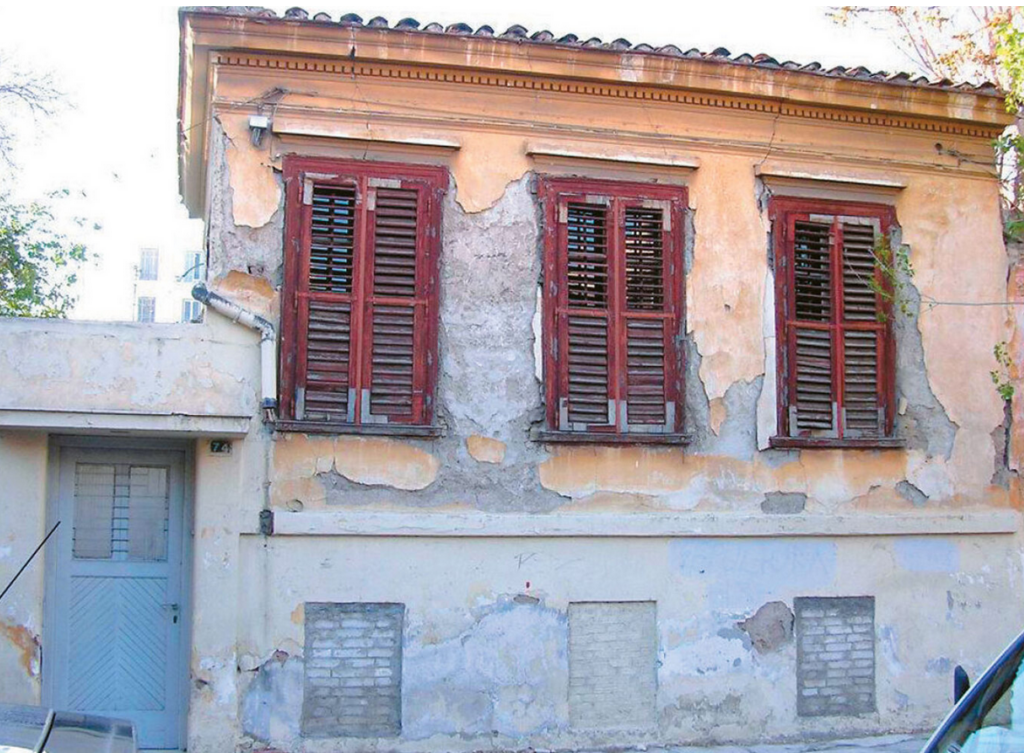
The former summer residence of Georgios Souris, Greece’s most notable satirical poet, located at 18 Thrasyvoulou Zaimi Street in Neo Faliro, is in a deplorable state. This two-story mansion and its garden were once the setting for unforgettable gatherings of Souris’ “literary salon,” which attracted prominent figures of the time, including Palamas, Polemis, Nirvanas, Stratigis, Karkavitsas, Drosinis, and others, especially during the summer months.
The building was constructed by local contractor Dilaveris, based on architectural designs by military engineer and architect Anastasios Theofilas. Today, it stands abandoned and looted, left to the mercy of time for decades.
The property is reportedly owned by Peter and Rene Traufer, and it was only declared a protected monument on October 21, 2019. Remarkably, the owners had applied for its demolition in January 2018!
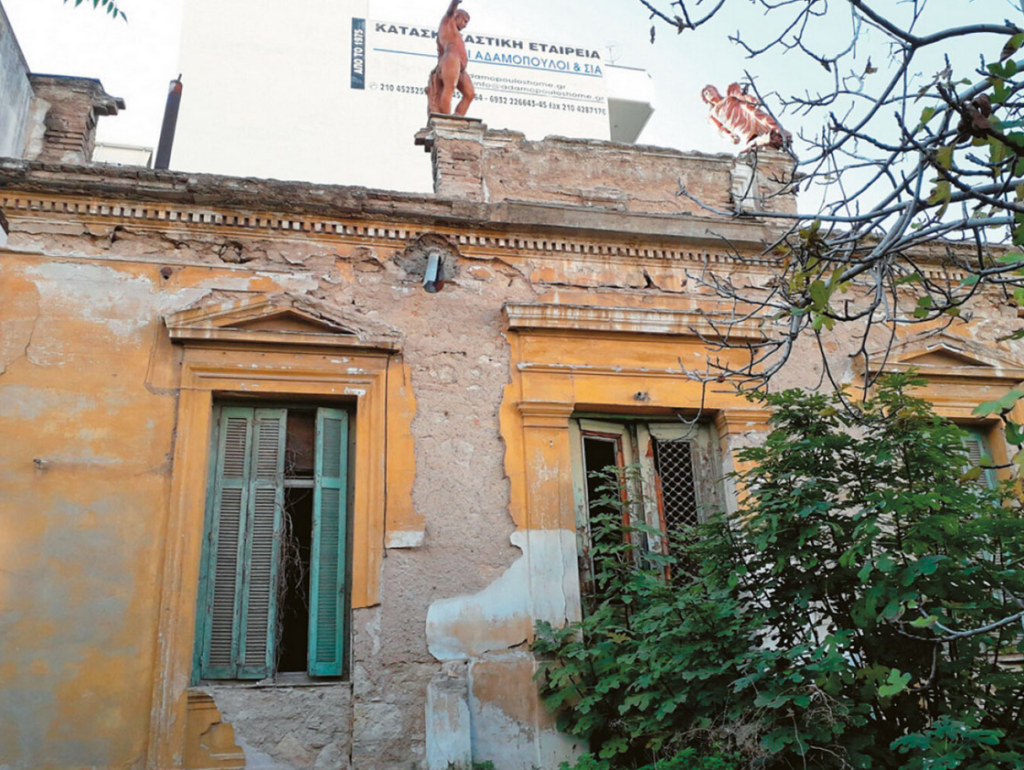
The house where the renowned Greek writer Menelaos Lountemis spent his childhood, located in Exaplatanos, Almopia, was in a state of disrepair by 2015. It had been completely neglected, left to deteriorate due to time and weather exposure.
In 2015, the local committee of the Pella Regional Unit deemed the house dangerous for the safety of nearby residents and passersby and recommended its immediate demolition. Despite verbal protests, no significant actions were taken. Thirty years prior, the building had been declared a protected monument by Presidential Decree. However, the house was ultimately demolished, with the municipality claiming that the demolition was initiated by one of the heirs.
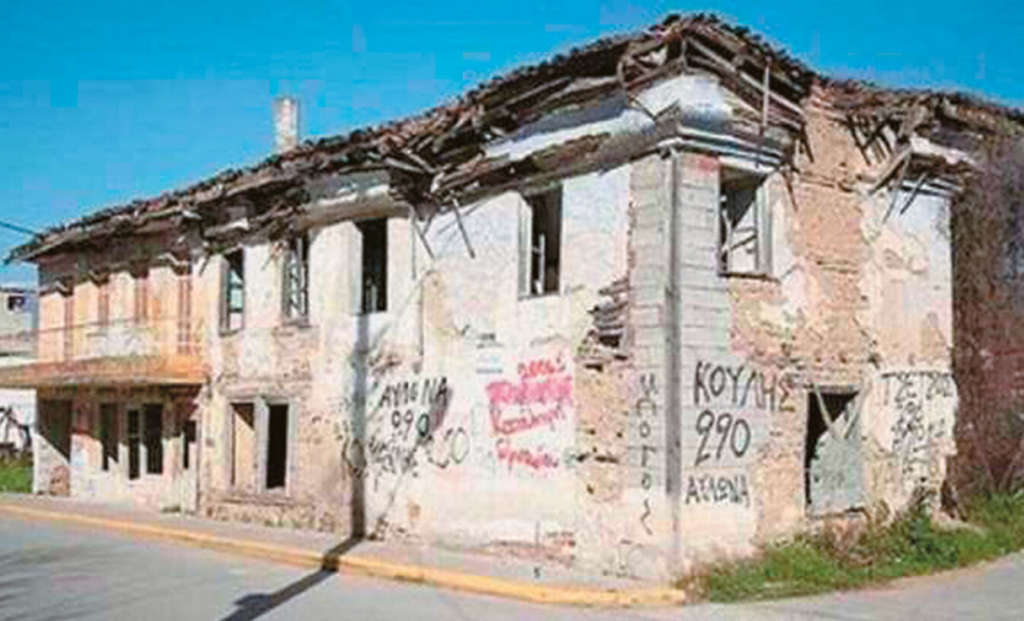
The neoclassical two-story house with an inner courtyard and an external stone staircase at 30 Oikonomou Street in Exarchia is now in a state of decay. This was where the prominent poet Napoleon Lapathiotis lived for much of his life and where he tragically died by self-inflicted gunshot on January 8, 1944. It was a particularly aristocratic home, notable for its magnificent furnishings, tall ceiling-high bookshelves with uniformly bound books, and the two study rooms: one belonging to General Leonidas Lapathiotis and the other to Napoleon.
Unauthorized Demolition
The incompetence and profound indifference of the state were exploited by the members of the Settlement Association (of illegal buildings) on the beach of Lechaina in Ilia, who proceeded with the demolition of the seaside house of Andreas Karkavitsas in July 2011. They claimed that it was a ruin and a source of pollution for their area.
This action sparked a storm of reactions within the local community, with organizations issuing protest statements denouncing the action as unauthorized. The house had been built many years earlier by the well-known writer and brother of Andreas, Kostas Karkavitsas, a benefactor of the Municipality of Lechaina.
A sad sight is the last house of the writer Kostas Tachtsis. A single-family home in Kolonos, on Tyrnavou Street, which he had bought a year before his gruesome yet unsolved murder in August 1988.
For 36 years, closed and neglected, abandoned to the fate and wear of time, it is said to have been sold at some point by his heirs, but it remains a living ruin. Perhaps because it carries the memories of a murder…
One house that has managed to escape destruction, although it came close, is that of Alexandros Soutsos at 47 Stadiou Street. Soutsos was a profound scholar of political economy, published many of his studies, and was a significant researcher of ancient writers. A prominent figure in 19th-century Greek letters, he was also a benefactor of the visual arts.
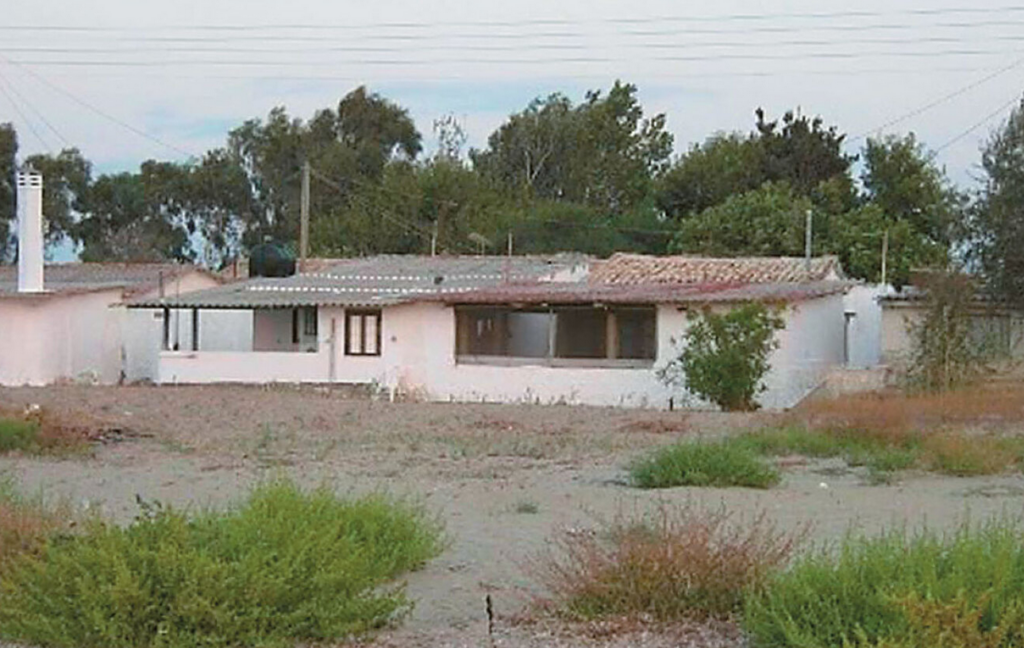
The neoclassical building with roots in the 19th century has been suffering from serious structural problems for decades, which is why its use was gradually abandoned. On May 1, 2020, a fire nearly destroyed it. Fortunately, it sustained only considerable but not irreparable damage.
This led to the eventual plan to convert it into the new headquarters of the long-suffering Theater Museum. After its full restoration, it will house part of its rich heritage, including the valuable Archive and the protected Theater Library.
Saved Buildings
In contrast, many homes of Greek literary and artistic figures from modern Greek history have been preserved. Some of these remain closed to the public for various reasons. However, others have not only been saved but also renovated with state funds, donations, or bequests, and have been transformed into museums or simple exhibition spaces. These buildings are crucial elements of our cultural heritage. Many of them now function as hubs of new cultural creation and production.
Among these is the house where Alexandros Papadiamantis grew up, lived, and died. Built in 1860 near the center of Skiathos, it was designated by the Ministry of Culture in 1965 as a historic preserved monument requiring special state protection. In 1990, repairs and stabilization work was carried out. Today, it operates as a museum, remaining arranged as it was until the last moments of the great short story writer’s life. The upstairs is maintained as a residence with authentic furniture and period items, while the ground floor functions as an exhibition space for old and new editions of Papadiamantis’s works.
Additionally, in Salamina, one of Angelos Sikelianos’s houses has been preserved. Situated by the sea, it was the poet’s refuge during the last and most difficult years of his life. It had been in disrepair for years but was handed over to the local authorities in 2006 after restoration by the Ephorate of Modern Monuments of Attica, at the request of Anna Sikelianos. Meanwhile, in the couple’s two-story residence in Delphi, in an exceptionally privileged location close to the archaeological site, the Delphi Festival Museum now operates. It was built between 1924-1926.
In the 1960s, it was expropriated by the Greek National Tourism Organization, and in 1985, the European Cultural Center of Delphi undertook its restoration to its original form. It operated from 1991 to 2011. It was eventually transferred to the Municipality of Delphi, to which the Center loaned items from its collection to reopen it as the Delphi Festival Museum under its own supervision.
In Marousi, at 28 Plutarchou Street, the home and studio of the great painter Yiannis Tsarouchis operates as a museum. By founding his eponymous foundation in 1981, Tsarouchis converted the first floor and attic into exhibition spaces for his works. He named it the Marousi Museum and organized exhibitions there. He left behind a rich and significant photographic archive, and based on this, the foundation presents a revival of his studio. It was temporarily closed but has been operational again since March 2018.
Moreover, the house where novelist and poet Kostas Krystallis was born in the remote mountain village of Syrrako in Tzoumerka in 1868 has been functioning as a museum dedicated to the author and local folklore since 1997, with a library included. It was donated by George Bountas, a merchant from Syrrako who lived in Paris, who purchased it in 1950. Krystallis’s early death from tuberculosis in 1894, at just 26 years old, prevented him from seeing his homeland free in 1912, but his legacy, a vast wealth of prose and poetry, remains relevant.
Another significant museum is currently being established in the Castle Town of Monemvasia. Last February, the museological and museographic studies for the house of poet Yiannis Ritsos were unanimously approved. This was where he spent his childhood. It is now being converted into a museum space to reconstruct the life and work of the great poet through the personal and social experiences that shaped his personality and became a source of inspiration, creation, and international recognition.
Elytis Museum
The home of our other Nobel laureate poet, Odysseas Elytis, in Plaka is also being transformed into a museum to house valuable archival material and preserve his work. Spaces have been designed for the exhibition and preservation of the Elytis Archive, as well as for important visual material that showcases the diverse work and life of Elytis. Additionally, the Nirvana House in Skopelos is being revived and will open its doors to the public in the near future.
The building has been repaired and converted into an exhibition space for the history of Skopelos from ancient times to the present, under the responsibility of the Ministry of Culture. This was the childhood home of Pavlos Nirvanas, who was from the island. It is located in the center of the traditional settlement of Skopelos, in the Saint John neighborhood, overlooking the amphitheatrical Chora and the picturesque harbor of Skopelos.
Lastly, the final residence of Kostis Palamas, located in Athens at 5 Periandrou Street in Plaka, overlooking the Temple of Olympian Zeus, is a two-story building constructed in the 1920s-30s, with characteristics of a neoclassical urban house of the interwar period. Palamas moved there in 1935 after being evicted from his previous home at 3 Asclepiou Street, which has since been demolished, where he had lived for over forty years. At the Plaka house, Palamas took his last breath amid the German occupation on February 27, 1943. It is now classified as a historic preserved monument.

Ask me anything
Explore related questions
